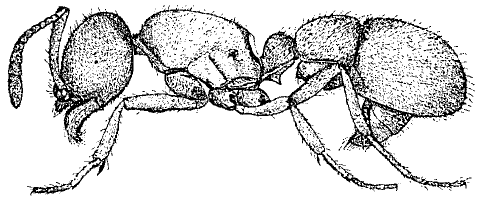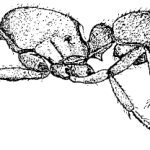
Reddish-brown, antennae and legs paler, head and alitrunk finely sculptured, surface moderately dull; body finely pubescent. This very distinct species has a low, rounded petiolar node and a characteristically shaped second gastral segment.
The distinctive features of this species were such that it was placed in the genus Sysphincta for many years.
Colonies are small; one found by Wesson & Wesson ( 1940) had a single queen, 11 workers, and 8 males.
Recorded from two counties in southwestern Ohio. Regional northern range limit for this species.
Named after Theodore Pergande, Ameri­can entomologist ( 1840-1916), who sent much of the North American ant material to Carlo Emery. A distinctive reddish-brown species formerly placed in a different genus.
Size
Habitat
Food
Behavior
Nesting Information
Verified Locales (counties)
Adams, Greene,


